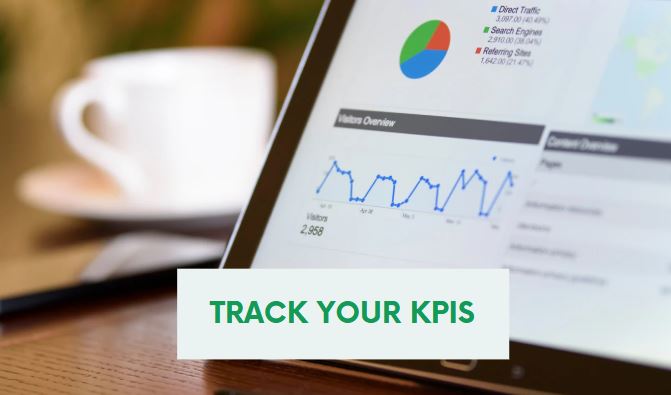Influencer marketing is a powerful way to boost the ROI of any business, but you need to work with the right influencers to make this strategy work. The good thing is establishing lucrative influencer partnerships doesn’t have to be complicated if you know where to look for the right people and how to negotiate. In this guide, we’ll tell you how to find micro-influencers for your brand and how to establish long-term business relationships for sustainable growth. Let’s dive in.
What Are Micro-Influencers?
First, let’s talk about what is a micro-influencer. They’re typically people on social media with a small yet highly relevant audience in a specific niche. As a business owner, you can get your message in front of their audience typically for a small upfront fee. Not every micro-influencer is worth working with though. Only the ones with a niche relevant to your business, quality content, and enough engagement qualify to be worthy partners. Plus, micro-influencers offer higher engagement rates than macro-influencers.
Step 1: Define Your Goals and Audience
84% of brands think influencer marketing is impactful when aligned with specific goals. So, before you can start reaching out to micro-influencers in your niche, it’s important to define your goals, target audience, and the platforms to focus on.
Identify your Marketing Goals
Think about what you want to achieve with influencer marketing. Is it brand awareness, more traffic, building your email list, or something else? What type of people do you want to connect with online? Which platforms are your target audiences active on?
Step 2: Research and Identify Relevant Micro-Influencers
Now that you have a clear goal and audience, it’s time to hunt for business partnerships. There are essentially two ways of doing that. Let’s talk about both.
Use Social Media Platforms
Let’s say you’ve identified Instagram to be the platform where your target audience hangs out. Your next step should be to find Influencers on Instagram and reach out to them with an attractive offer.
Use Instagram’s search feature to create a list of the most relevant profiles and reach out to them one by one.
Utilize Influencer Marketing Tools
Tools like BuzzSumo can help you find the right influencers based on your niche and location, saving you time and effort.
You May Also Like: Hiring a Video Editor
Step 3: Evaluate Potential Micro-Influencers
Once you have a list of potential influencers, it’s time to narrow this list down to a few most relevant options. First, make sure the influencer produces content related to your niche. For instance, if you’re a health coach, find influencers who have a health-conscious audience.
Assess Follower Count, Engagement Rate, and Content Quality
The follower count of an influencer matters, but it’s not the only important factor to consider. The quality of their content and how engaged their audience is also matter a lot. Otherwise, you’d be showing your messages to an inactive audience with insignificant results. After all, people can buy fake followers, but it’s way easier to spot fake engagement or low-quality content.
What you can do is look at their latest posts and analyze the engagement rate. If you see a good position of their followers engaging with the content, move forward to the next step.
Step 4: Reach Out and Build Relationships
Cold outreach is an art. Most influencers get messages in their inbox regularly, so it’s hard to get their attention. You need to stand out in their inbox by offering something first or making your message super unique.
Interact with Their Content
Before reaching out, we recommend engaging with their content for a while. Get yourself noticed by them. This can be as simple as an insightful comment on a post. Register yourself in their minds so that when you reach out, they recognize you.
Craft Personalized Outreach Messages
Keep your first message short, personalized, and friendly. For instance, you can mention something specific about a recent piece of content. The goal is to start the conversation.
Related: How to Use Social Media to Hire
Offer Collaboration Opportunities
A perfect way to get yourself noticed is by offering something of value upfront. For instance, most influencers are only interested in paid collaboration, so you can ask them about their sponsored post rates. In such a deal, they’ll let you publish a post on their page in exchange for monetary compensation. A single post from a micro-influencer can cost up to $2500, reflecting their growing value. At the same time, 44% of marketers prefer micro-influencers because of their cost-effectiveness.
Step 5: Track and Measure Campaign Results
Setting and forgetting don’t work in influencer partnerships. You need to track your results to make sure you’re investing with the right influencers and in the right way.
Set Key Performance Indicators (KPIs) and Monitor Success
Start by defining your key performance indicators. These are mostly the likes, comments, and shares on Instagram. It can also be email sign ups, lead generation, and sales depending on your goal. Track the performance of your influencer marketing campaigns based on the set KPIs and make sure you’re moving in the right direction.
Finding Micro-Influencers for Your Brand: FAQs
Let’s address some frequently asked questions about finding micro-influencers for your brand.
What Defines a Micro-Influencer?
A micro-influencer is a social media personality with a modest following in a specific niche. They create content around that specific niche and build trust with their audience.
Why Should I Collaborate with Micro-Influencers?
Collaborating with micro-influencers helps you put your brand or product in front of the right audience and get a step closer to your marketing goals.
How Can I Track an Influencer Partnerships Success?
You can track an influencer marketing campaign’s success by monitoring key performance indicators like engagement, conversion rate, and return on investment.
Conclusion
Working with a micro-influencer is a smart marketing strategy for most brands. It’s a cost-effective and quick way to reach and connect with a niche audience. Whether you want to build brand awareness, get more website traffic, or generate sales, influencer marketing is a great option.
However, it’s possible to end up with the wrong partner and waste your resources. To make this strategy work for your brand, always vet an influencer thoroughly before reaching out. Their follower count, engagement rate, niche relevance, and content quality are some factors that can help you pick the right partner for your brand.
Read More: What Does a Social Media Analyst Do?
References:
- https://www.meltwater.com/en/blog/influencer-marketing-statistics
- https://www.dash.app/blog/influencer-marketing-statistics
- https://digiday.com/marketing/as-influencer-marketing-grows-so-do-micro-influencer-rates-there-have-been-10-20-fee-jumps-year-over-year/
- https://www.meltwater.com/en/blog/influencer-marketing-statistics
- https://afluencer.com/ultimate-guide-finding-micro-influencers/

